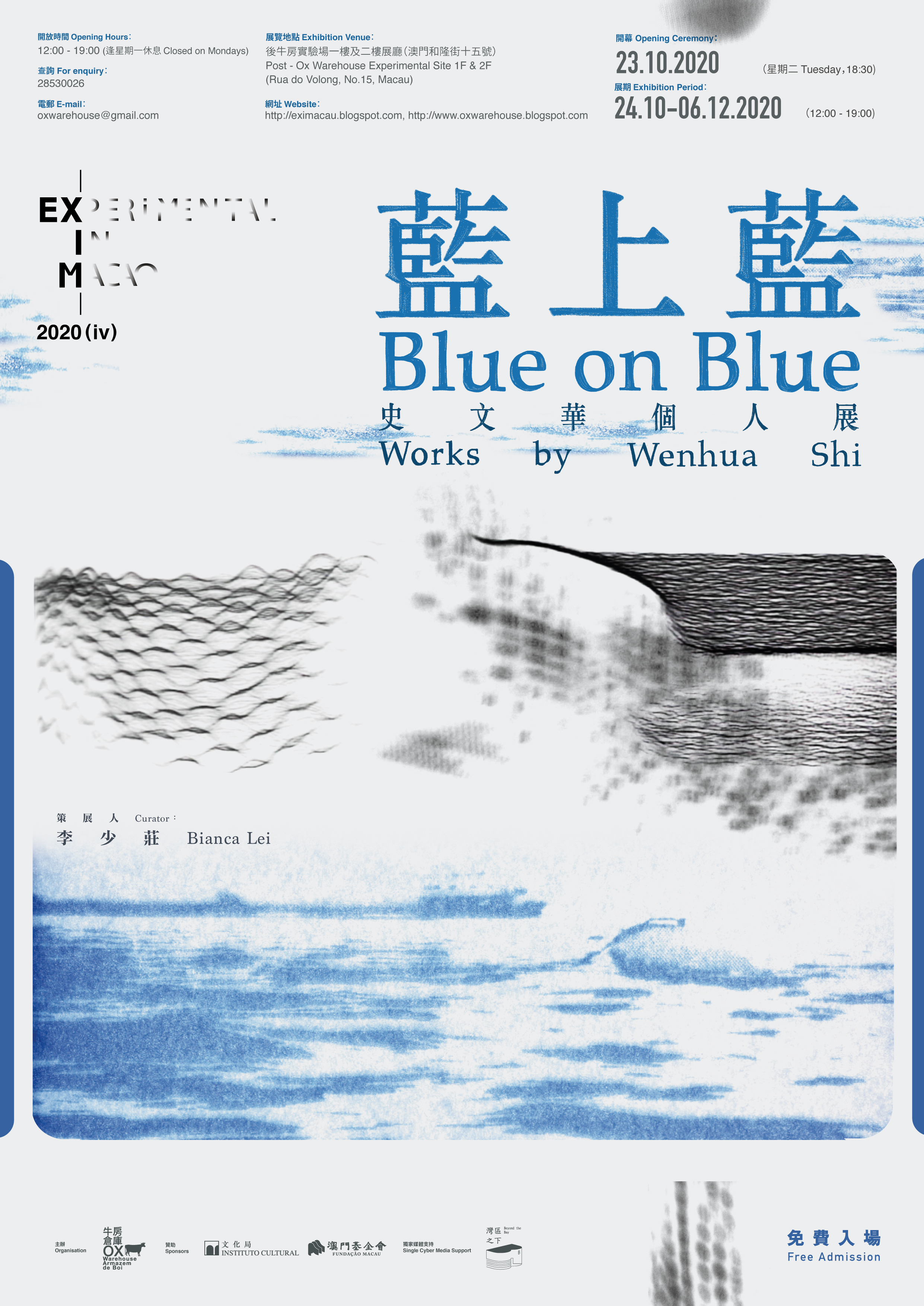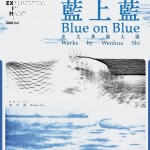curating: EXiM 2020 (iv) — “Blue on Blue” – Works by Wenhua Shi
Preface
EXiM2020 proudly presents Blue on Blue – Shi Wenhua Solo Exhibition as the third exhibition in the 2020 series. Shi, a Chinese diaspora artist, is established as a fearless Avant Garde in the moving image experimental field and contemporary art practices. Currently he is an assistant professor at University of Massachusetts Boston. During the exhibition, EXiM 2020 installed his most recent works. Six pieces in the format of single channel, multi-channel, projections and installations are located at the 1st and 2nd floor of the exhibition hall.
Shi created Because the Sky is Blue with Cyanotype, an antiquated photographic chemical printing process, commonly known as blueprints. The artist reproduced animation stills from mobile short video clips frame by frame and then this process repurposed video into a sequence of stills. In this work, the artist takes audiences on a time-travelling journey, from today’s wide-spread digital memes back to the century-old period of Cyanotype still photography, through animated rephotographing, finally returning to high-definition video. It, seemly, is a retrospective voyage of image development, as the non-material medium has been transformed into tangible image on paper with potassium ferricyanide and ultraviolet ray sunlight effects. Yet, the artist, painstakingly, altered the rhythm of the original video sequence through frame-by-frame animation. Gutai is named after Japanese post WWII art movement Gutai Bijutsu Kyōkai, aka the Gutai Group, founded in 1954. Gutai artists often used the artists’ bodies as a tool or integrating both the body and tool in artistic practice. “The ubiquitous cameras have long surpassed the traditional notions where the camera is an extension of the human eye, in fact the camera has replaced the human eye,” Shi notes. The camera lens became the artist’s eyes, capturing his present moment, the texture within landscapes, the moving figures and so on, while in-camera images reveal a kind of eagerness to search for those moments passed, which, like fragments in the mind, have become mélange pictures, reverberating and flashing repeatedly. The work Die Nacht (The Night) bears a title from a German Lieder (art song) composed by Richard Strauss in 1885. The melodramatic singing accompanies this cinematic piece as well. Its lyrics come from a poem of the namesake title, written in 1864 by Austrian poet Hermann von Gilm. Sunlight shines through the glass window into the interior, briefly delineating the scene inside. Guided by light, the work presents how time flows away; the lights and shadows make our eyes feel warm with silky touches while also inducing our elegiac feelings from within. It’s a verse written with light and shadow, and time. Die Nacht, along with Gutai, Point of No Return Because the Sky Is Blue is displayed on the first floor. The three-channel video installation, Point of No Return, was created by an electronic signal processor to distort the original audiovisual images into abstract lines and patterns – “irreversible video modulation” as per Shi Wenhua. At the same time, the piece shows us that digital technology is leading us into a new but enigmatic world.
The immersive blue light illuminates the second floor, where two video installations are presented, Water Walk and Senses of Time. Water Walk was created when the artist revisited East Lake in Wuhan. The work tries to draw people’s attention to urban transformation and the problems resulting from radical city development. The sceneries shown on the screen are in stark contrast to those depicted in a children’s song[1] from the artist’s childhood – it’s like “Unexpectedly the oceans and mountains have changed so much, beyond my recognition.[2]” This piece was shot with two GoPro cameras mounted on boat paddles as they are rowed on East Lake, so that following the movements the audience repeatedly go into and out of the lake like a breathing pattern. By setting up an unconventional camera point of view, the artist subverts our accustomed watching/viewing experience, creating for us a familiar yet quite different perceptive experience. On the other hand, depicting more profoundly the lyrical and poetic passage of time, Senses of Time can be regarded the continuation of Gutai and Die Nacht. Flowing light, shadow and textures of landscapes still the centerpieces.
Shi Wenhua writes poems using image. Time is an important theme in many of his works, and light becomes his interpretation medium. He can always bring viewers into a contemplative space, together to lament upon the passage of time as well as the people and landscapes around, while also reflecting on the impact of progress and development on humans. It indeed takes a tranquil mind and deep contemplation to appreciate his work. Despite a smooth screen, the work allows us to touch, through visual and auditory senses, the undulating traces as well as feel the textures of landscapes. In the description of his works, Shi mentions many influential pioneering experimental artists, including Nam June Paik, Gary Hill, Jonas Mekas, Phil Solomon and the Japanese Gutai Group. He means to pay tribute to them while also drawing inspiration from the aesthetic of quintessential experimental imaging, for continuous exploration whether it be the creative method or cutting edge and obsolete media.
Bianca Lei, 2020/10
[1] “Let Us Row The Boat Together”, theme song of the 1955 movie “Flowers of the Motherland”, composed by Liu Chi, with lyrics by Qiao Yu
[2] “The Land Is Mine”, theme song of the 1980 Hong Kong TV drama series “The Land Is Mine”, composed by Joseph Koo, with lyrics by James Wong.
Organisation:Ox Warehouse
Sponsors:Instituto Cultural、Fundação Macau
Single Cyber Media Support:Beyond the Bay
related links: EXiM

